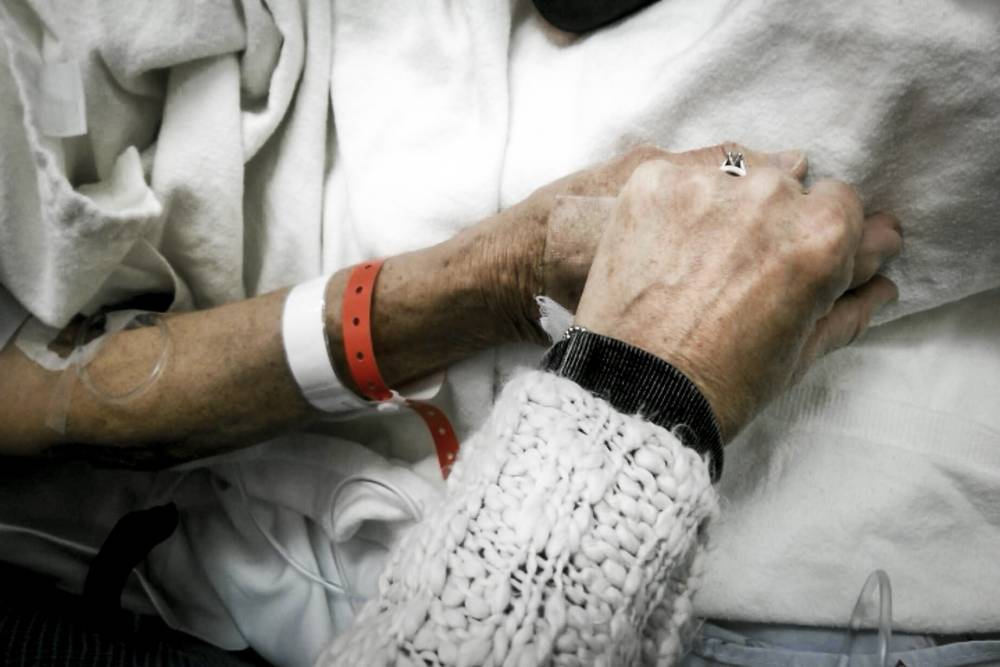
Pressure wounds are widely considered a marker of neglect, but experts in the field have told HelloCare that pressure wounds can also develop as part of the process of dying, and even when every preventative measure is taken, they can not be stopped from forming.
When a person dies, the body usually shuts down gradually, and the organs generally stop functioning one by one.
The skin, of course, is one of the largest organs in the body, and it too begins to stop functioning as part of the process of dying.
One of the signs the skin has stopped functioning, and therefore that death is near, can be the appearance of pressure sores, some experts say.
But it is also widely accepted that the appearance of pressure wounds can be a sign of neglect. In fact, from 1 July aged care operators will have to report all pressure injuries as part of the new quality indicator framework.
This quality indicator is a positive step for the aged care industry.
But it follows that staff may be devastated when a pressure wound appears, even when everything possible has been done to avoid it.
The knowledge that some pressure wounds appear as part of the process of dying, and are unavoidable, may provide such staff with some reassurance.
Jan Rice has decades of experience in the field of wound management and is now a wound nurse consultant and director of Jan Rice WoundCare Services.
She told HelloCare there have been questions around the issue of unavoidable pressure wounds for more than 10 years, but there has not been consensus on the subject.
Unavoidable pressure wounds are not part of any of the widely accepted guidelines, Ms Rice said.
But she said, “I think we should have them. It’s an unavoidable part of dying.”
Claire Schmiere, chief executive officer of Sunnyside House told HelloCare, “We are teaching staff to inform families of our residents at end of life/palliative care stages about these ulcers so they understand about the skin (the largest bodily organ) and the dying process, and that they do not think we are neglectful with their loved one’s care.”
Unavoidable pressure wounds are also known as Kennedy Terminal Ulcers, and they were first identified in 1983.
KTUs are generally pear, butterfly, horseshoe, or irregularly shaped, and appear as ared/yellow/black ulcer.
They can often appear suddenly, even within hours, and progress rapidly.
They most often develop in the sacral/coccygeal area, as well as on the heels, posterior calf muscles, arms, and elbows.
The ‘blister roof’ may be very fragile and even gentle cleansing may change cause a large open wound to form.
KTUs form despite all the appropriate preventative measures being taken.
A 2009 study found that some pressure wounds are unavoidable.
“Pressure ulcers remain an important indicator of quality; however, there is a subset of patients where skin breakdown is unavoidable with current prevention technologies,” the report states.
Ms Rice said a pressure would can only be considered unavoidable if it can be proven that staff have done all they can firstly to avoid the pressure wound from developing in the first place, but also have done all they can to treat the wound once it has developed.
Health professionals can show that a resident or patient has developed an unavoidable pressure wound by showing they have assessed the person, developed a plan of care based on the assessment, implement the plan of care, and then evaluated and revised the plan of care as needed.
If health professionals can show they have followed this process, they should be able to prove the person’s skin broke down despite there being the appropriate preventative measures put in place.
The identification of a pressure would in someone who is seriously ill can be devastating, not only for the person concerned, but family, and care staff, who may well feel they are responsible.
However, all those concerned may be reassured by learning that some pressure wounds are in fact unavoidable, as Ms Rice and Ms Schmiere have suggested and much literature supports.
But most importantly, the presence of a KTU can alert staff, family and the person themselves to the fact that death may be near, and the appropriate care and support can begin.
Working in age care i have seen a number of uclers appear in last weeks before death. The stress for nurses is we are taught they are avoidable. This article is very welcome